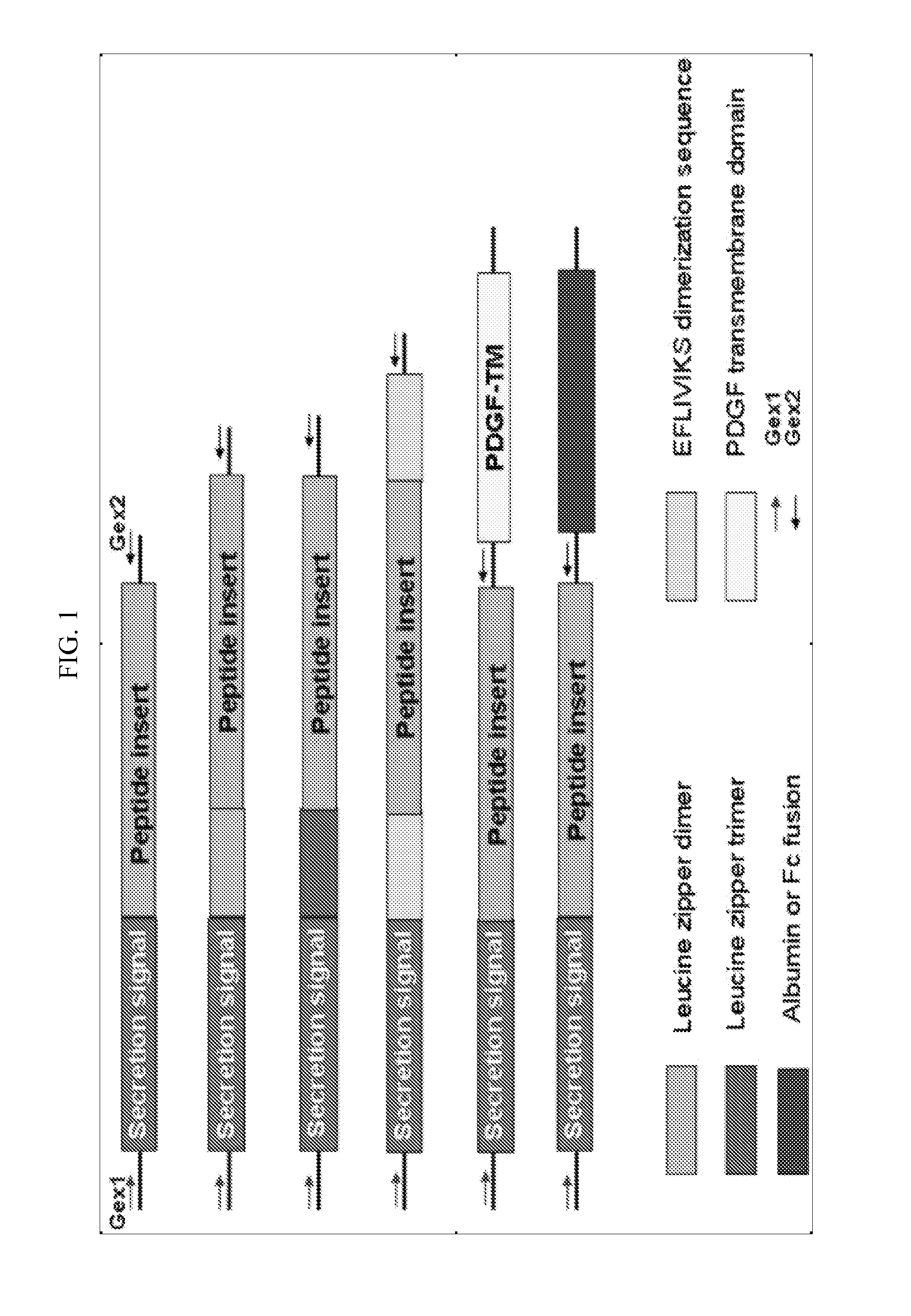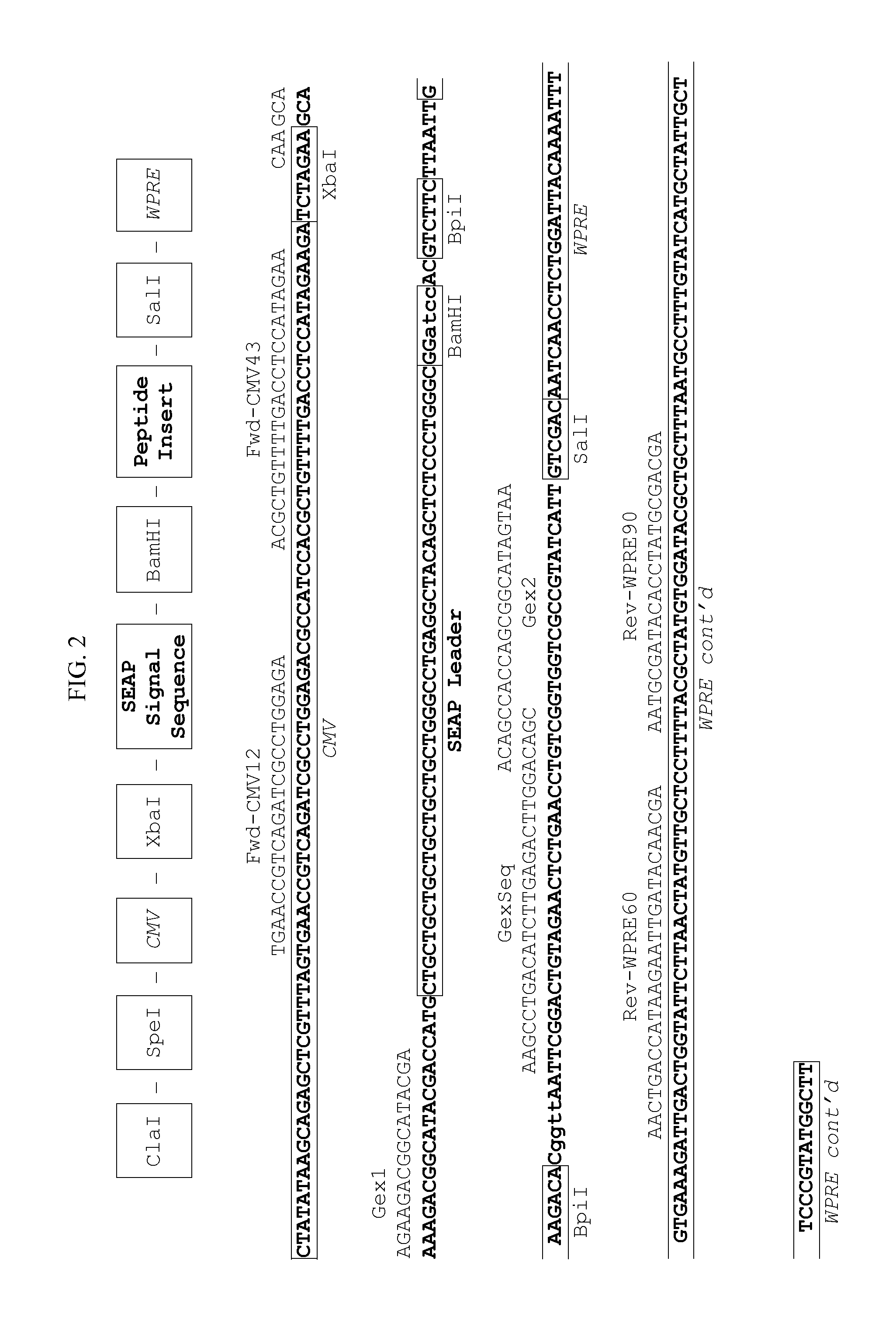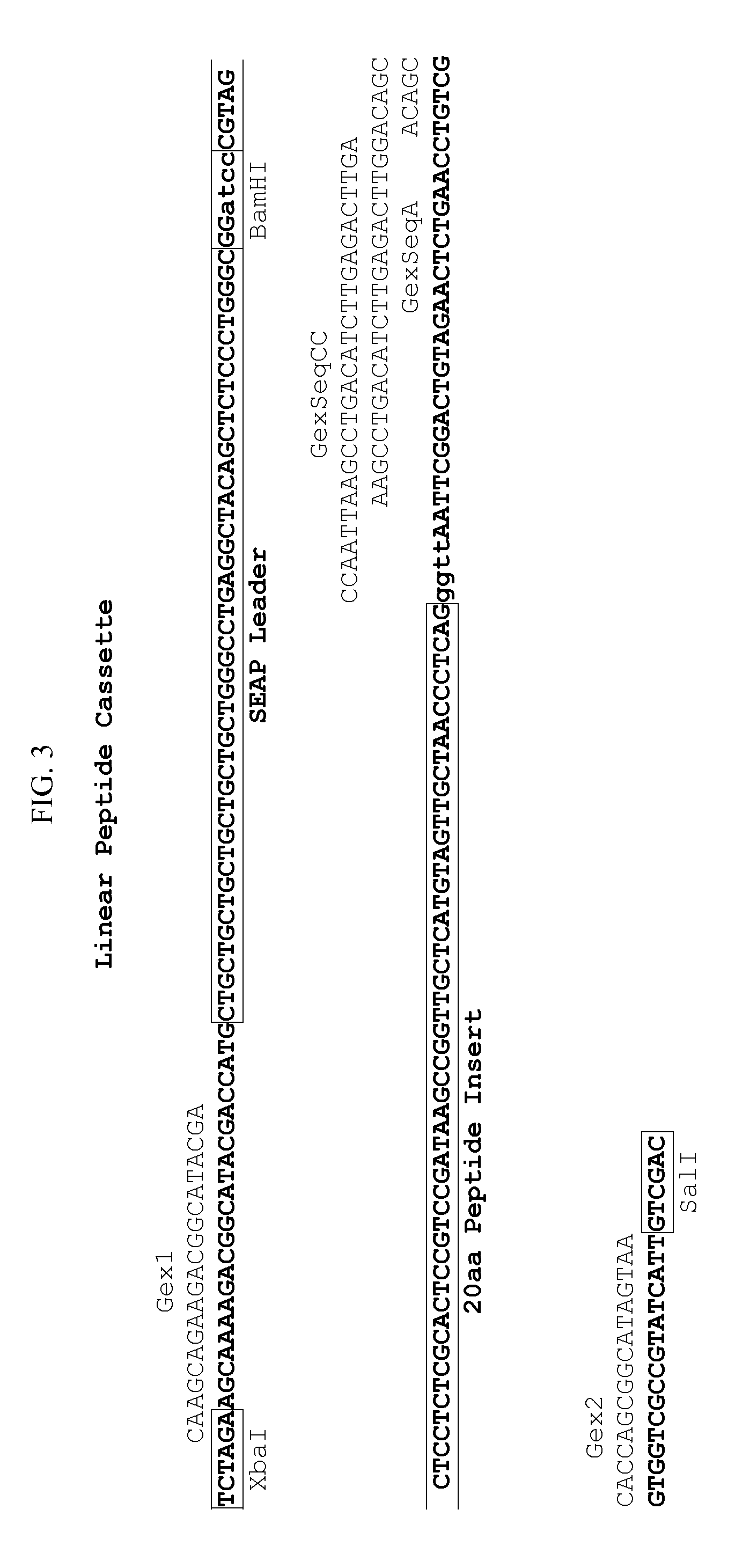Reagents and Methods for Producing Bioactive Secreted Peptides
- Summary
- Abstract
- Description
- Claims
- Application Information
AI Technical Summary
Benefits of technology
Problems solved by technology
Method used
Image
Examples
example 1
Validation of Pentiviral Peptide Libraries for HTS of Bioactive Peptides
[0095]Pooled lentiviral peptide libraries (50K) were validated for the discovery of extracellular peptide effectors of TLR5, TNFα, and IL-1β-receptor mediated NF-κB signaling pathways using a human embryonic kidney cell line (HEK 293) comprising a reporter protein (green fluorescent protein) operatively linked to an NF-κB-responsive promoter as illustrated in FIG. 10. The 293-NFκB reporter cell line was transduced with the peptide libraries. Cell fractions demonstrating a modulation in the GFP reporter expression level, defined as either activation or repression, after induction with natural ligands were isolated by FACS. Bioactive peptides were identified by amplification of peptide cassettes from the genomic DNA of sorted cells, followed by HT Solexa sequencing. This process is depicted schematically in FIG. 11. The peptides identified in the primary screen were then further developed as lentiviral peptide eff...
example 2
[0096]Development of 500K Secreted Peptide Libraries
[0097]Using computational prediction tools developed as set forth above, a comprehensive set of extracellular proteins of eukaryotic, prokaryotic, and viral origin were selected, including but not limited to cytokines, growth factors, extracellular proteins, matrix proteins, receptors (extracellular domains), membrane-bound proteins, toxins, bioactive proteins / peptides. An exemplary set of such proteins is set forth in Table 1. There are an estimated 25,000 proteins that can act by modulating cellular responses through interactions with cell surface receptors. The selected extracellular protein sequence pool was reduced to a set of protein functional domains that are evolutionarily conserved (an estimated 100,000) using computer-assisted sequence alignment analysis and the NCBI Conservative Domain Database (CDD) as discussed herein. For each selected domain, a redundant set of 2-20 peptides (15aa-60aa in length) was designed to com...
example 3
Optimization of Functional Screening Strategy Using a Secreted Lentiviral Peptide Library
[0098]Some of the limitations of the phage display technology for functional screening can be overcome by directly expressing the peptide library in mammalian cells. Although retroviral expression libraries of cDNA fragments (GSEs) and peptides have been successfully employed in the past to isolate intracellular transdominant negative agents (Roninson et al., 1995; Delaporte et al., 1999; Lorens et al., 2000; Xu et al., 2001), these approaches have in practice been limited to intracellular peptides. Disclosed herein is a secreted peptide library using the lentiviral expression system to enable functional screening of receptor peptide ligands. Such lentiviral secreted peptide libraries, in combination with suitable reporter cells and FACS, can be used to isolate peptide drugs.
[0099]In order to select an optimal signal sequence for peptide secretion, four novel lentiviral secretion vectors were de...
PUM
| Property | Measurement | Unit |
|---|---|---|
| Fraction | aaaaa | aaaaa |
| Fraction | aaaaa | aaaaa |
| Length | aaaaa | aaaaa |
Abstract
Description
Claims
Application Information
 Login to View More
Login to View More - R&D
- Intellectual Property
- Life Sciences
- Materials
- Tech Scout
- Unparalleled Data Quality
- Higher Quality Content
- 60% Fewer Hallucinations
Browse by: Latest US Patents, China's latest patents, Technical Efficacy Thesaurus, Application Domain, Technology Topic, Popular Technical Reports.
© 2025 PatSnap. All rights reserved.Legal|Privacy policy|Modern Slavery Act Transparency Statement|Sitemap|About US| Contact US: help@patsnap.com



